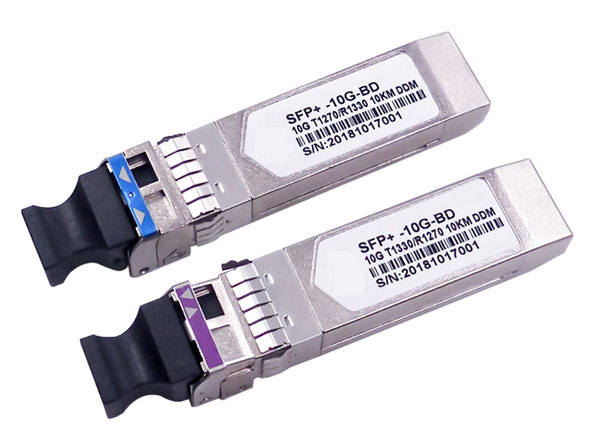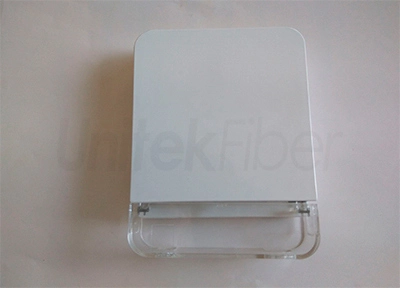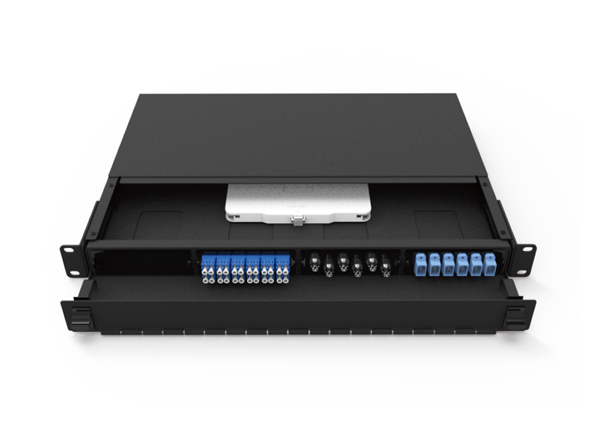
Fiber optic jumpers are generally 1meter, 3meters and 5meters in length. What do you need to do when sorting out such fiber optic jumpers? How to deal with the wire trimming of fiber optic jumper?
1. The steps of managing fiber optic jumper:
Step 1: Identify the optical cross box and the data room and find the optical splitter.
Step 2: Identify the optical splitter number.
Step 3: Find the optical splitter port configured on the work order.
Step 4: Find the port that accesses the user's fiber optic cable core sequence.
Step 5: Hop from the optical splitter port to the user optical fiber cable port.
2. Basic knowledge and specifications of fiber optic jumper
1) The operation must meet the principles of within ODF frame, optical cross box, neat combined test cabinet, beautiful wiring, easy to operate, less space.
2) The length of fiber jumper must be within the range of 500mm.
3) fiber Jumper with insufficient length shall not be used. Flanges are not allowed to connect two segments of jumper.
4) The curvature radius of each fiber optic jumper shall be greater than 400mm.
5) General requirements for fiber walking:
① For the optical fiber that is routed from the top, go down the outer side of the ODF rack, select the disk fiber column with the most suitable residual fiber cable amount, and route the fiber cable upward on the inside of the ODF rack, horizontally along the bottom edge of the ODM, and vertically upward to the corresponding terminal.
② One optical fiber jumper is only allowed to go up once (along the outside of the ODF frame) and once (along the inside of the ODF frame) in the ODF frame, and one coil fiber column is used. It is forbidden to wrap, cross or hang between multiple coil fiber columns, that is, there is no fiber winding on the upper edge of each coil fiber column.
③ According to the specific situation of the site, it should be arranged and strapped according to the provisions.
④ All optical fiber jumpers must be laid in the ODF frame, and it is forbidden to lay outside the frame and fly wire and other phenomena are not allowed.
⑤ The super long optic fiber jumper for emergency use should be hung on the inner fiber plate in accordance with the rules, and shall not affect the future fiber jumper.
3. The Fiber optic Jumper types and length control
1) Select the corresponding fiber optic jumper (SC-SC, FC-FC, SC-FC) according to the flange head on the optical splitter and fiber splitter box.
2) In terms of fiber optic jumper from the optical splitter to user's fiber cable, the length of the residual length is controlled within 50CM, so generally choose 1m, 2m, 2.5m, 3m tail fiber jumper.
3) The ONU and the fiber optic terminal in the user fiber terminal box generally use a 50CM short fiber optic pigtail.
4. Management and specification of optical fiber jumper labels
1) All labels must be labeled by machine. Handwriting is not allowed.
2) Labels should be attached to both ends of the optical fiber jumper from the optical splitter to the user's FTTH drop cable in the equipment room, optical cross box, and corridor.
3) After completion, the effect is: uniform standard length, conform to the clearance of terminal positions, labels are not staggered.
4) The front side is the name of the optical path, and the back side is the code and barcode of the optical path, with the same orientation.
5) The changing text sags along with the fiber optical pigtail and naturally faces upwards.
5. Perform necessary optical path tests
After the completion of each section of fiber optic jumper, the test procedure is as follows:
1) The optical power meter is used to test the 1490 wavelength of the beam splitter outlet, and the optical power should be less than -22dB.
2) The user's optical power meter is tested at 1490 wavelength. The received optical power should be less than -23dB, and the maximum sensitivity of ONU is generally -24dB.
3) Conduct Internet debugging for users with ONU devices.
4) If there is no light, you can judge whether the fiber cable is wrong by visual light source (red light).
5) If there is no wrong fiber cable but still no light, with rapid-activity loss, ONU cannot work properly, you can ask the fiber cable maintenance department to deal with it.
6. Resource management
Do not change the fiber cable sequence of the construction order without authorization. The optical path resources need to be changed during installation, removal and maintenance. Record the information about the optical path in the work order and feedback it to the resource department for updating in time.
Precautions for optical fiber jumper:
1 The type and use of optical fiber jumper
According to the existing standards of ODF rack and device port, fiber optic jumper can be classified into the following types:
(1) By interface type, fiber optic jumper interfaces can be divided into: FC, ST, SC, and LC.
(2) According to the length of the interface: fiber jumper tail is 1.5m, 2m, 3m, 5m, 10m, 15m and 20m. At present, we usually use 3m, 5m, 10m, 15m and 20m.
(3) Purpose: FC interface is used to connect the remote fiber core of ODF frame; The SC interface is used on the ODF rack (few) and devices, such as OLT and ONU device interfaces in EPON, and photoelectric converter interfaces. The LC interface is used only on the device interface. Two of the three core interfaces are combined to realize the physical connections between ODF and ODF racks, between ODF racks and devices, and between devices.
2 Preparations and matters needing attention outside the site:
Before jumping fiber patch cable, generally based on the needs of the business, there will be a requirement. However, according to different requirements, the equipment is different, and different preparation work is needed. Therefore, before jumping fiber patch cable, there should be a clear idea of work, clear work objectives. Otherwise, there will be situation such as forgetting to bring enough optical fiber jumpers, so that the work tasks cannot be completed on time, work objectives cannot be achieved on time, affecting the development of the company's business. Therefore, the preparation before jumping fiber patch cable is very important to the achievement of work objectives. Onsite preparations are usually carried out outside the equipment room. Besides, there are some matters needing attention.
1) Off-site preparation before jumping fiber cable :
① Work train of thought: what is the purpose of jumping fiber patch cable? What is the device that needs to be connected with a fiber jumper? What interface is used for the device? What type of fiber jumper is needed? Is an optical module required? Do you need any other tools? These are all things that need to be considered in advance.
② Tools: optical power meter (including test jumper), red light pen, tube sleeve, label, oil pen, notepad, pliers, and electric tape.
③ Materials: the quantity, type, or length of the optical fiber jumper, optical module and corresponding materials depend on requirements.
④ Disk information preparation: to connect different equipment rooms, learn about the disk information in the equipment room and record it in a notepad.
2) Matters needing attention outside the site before fiber patch cable jumping:
① If the optical module is needed, the type, distance, wavelength and other parameters of the module should be paid attention to;
② Pay attention to the type and length of the fiber core interface, whether to span the cabinet, how far apart the cabinets are, and whether to use a distribution frame.
③ Spare optical module and fiber jumper. At least one spare optical module and a pair of optical fiber jumpers must be prepared.
3 Preparation work on site before jumping fiber patch cable
① Untie the fiber patch cable tail band, and expand the two patch cable tails respectively. When it is fully expanded, the same interface is put together. After straightening out, the two optical fiber jumpers are tied together with electric tape;
② If the fiber cores in different equipment rooms are connected, contact colleagues in the remote equipment room by phone to test whether the fiber tail can be used normally, whether the ODF disk is wrong, and whether the optical loss of the cable is normal; if the devices in the equipment room are connected, connect the related devices to test whether the fiber tail can work properly.
③ Use notepad to copy down the serial number, the length and type of the fiber core of the module to be used, so as to facilitate the management of assets.
4 Field precautions in jumping fiber patch cable
① There are three types of situations: one cabinet, adjacent cabinets, and inter-cabinet jumpers. The difference is that the fiber tail should be protected by the sleeve when crossing the cabinet. If there is a distribution frame, the distribution frame should be used.
② Connect one end of the fiber tail core to the device, and route the other end through the left side facing the cabinet. Wrap the extra fiber tail into a circle (not a straight line), and wrap it with electrical tape, as shown in Figure 4-1图片在哪里?. Then connect the other end to the device or ODF frame, and the ODF frame should be connected from the left side of the ODF frame to the wire, and the phenomenon of wire flying should not occur.
③ Label paper should be affixed after jumping the fiber core, and label it according to naming requirements.
④ After labeling, the use of ODF core should be registered. If the main core is connected, the use of main core (information of home and opposite terminals written on the label) should be recorded with a notepad.
⑤ Collect the protective caps of the module and fiber tail and put them in a small box at the bottom of the cabinet for future use.
5 Finishing work after jumping fiber patch cable:
Before leaving the equipment room:
① Contact relevant colleagues to test whether the fiber core has been through and whether the work has been completed;
② After confirming that the jumping fiber cable work is successfully completed, arrange onsite tools and clean up garbage such as tail fiber bags to keep the equipment room clean;
③ Turn off the lights in the room, check again whether there is anything left in the room, and lock the room door when you leave.



